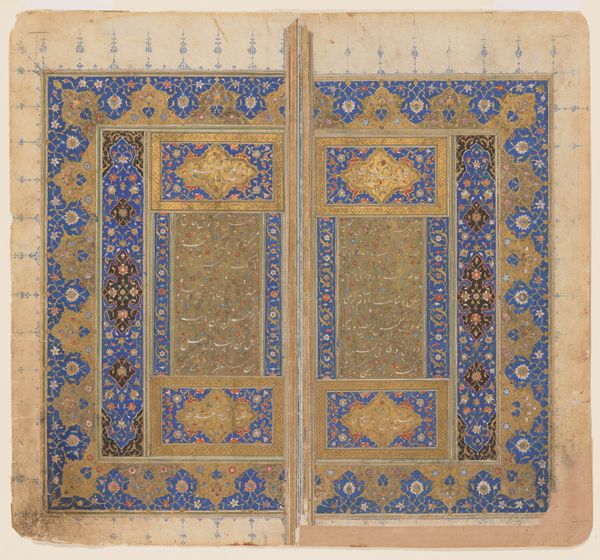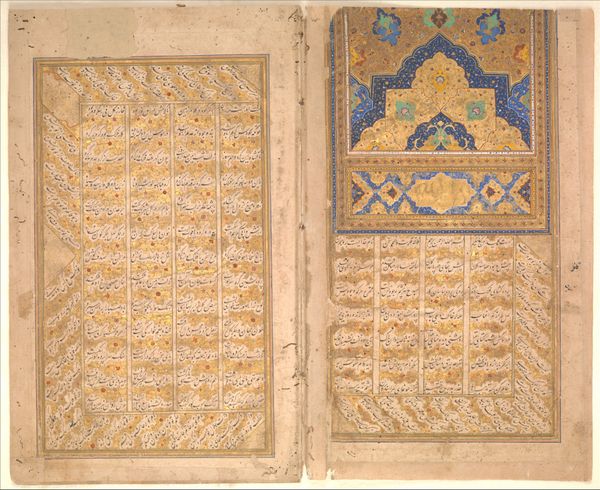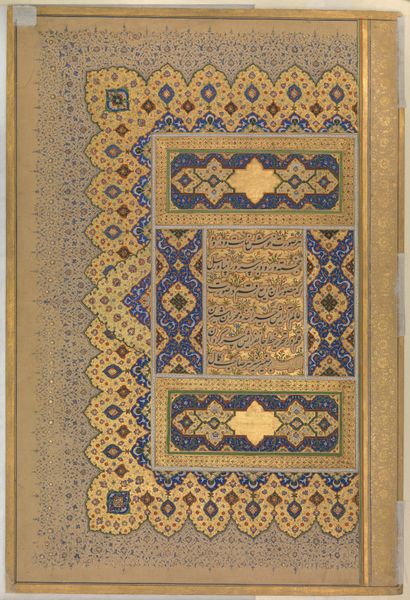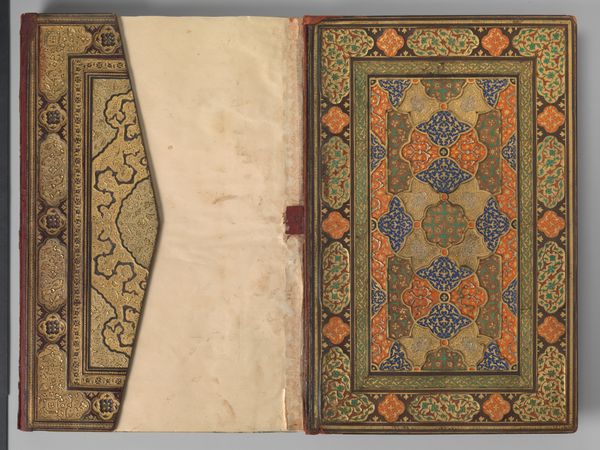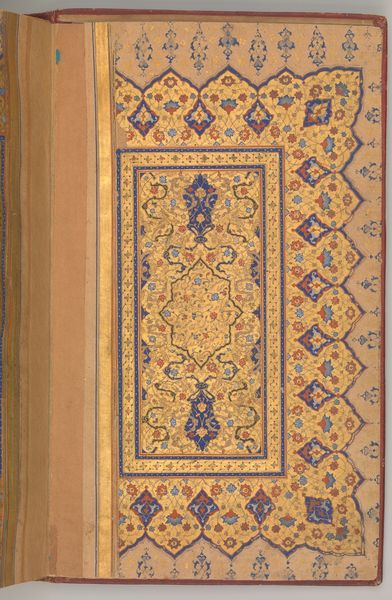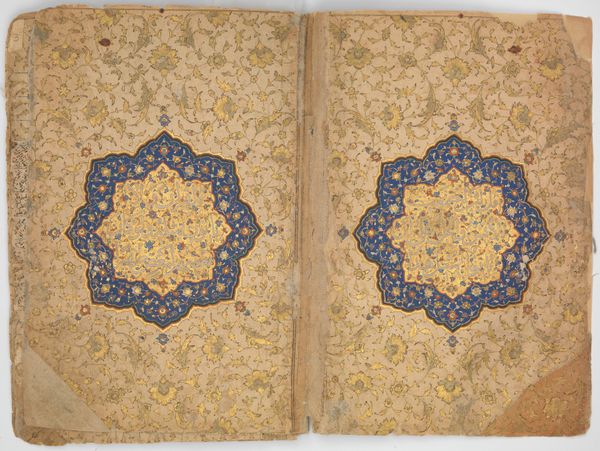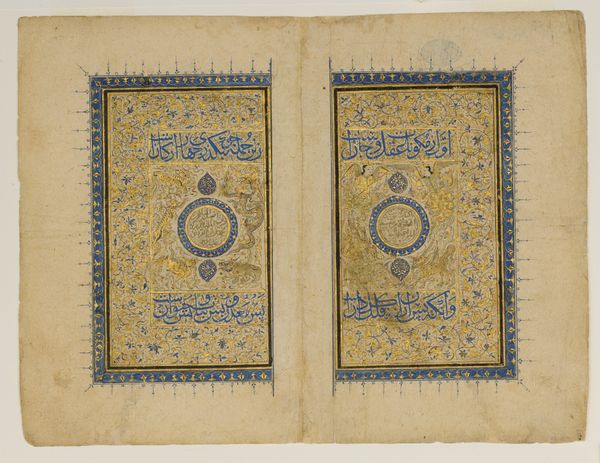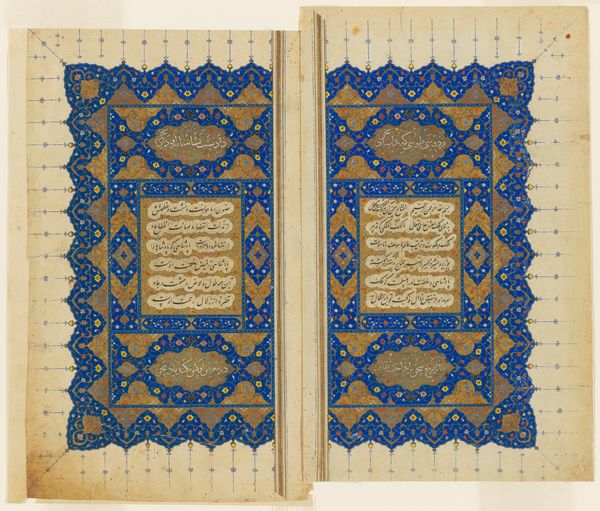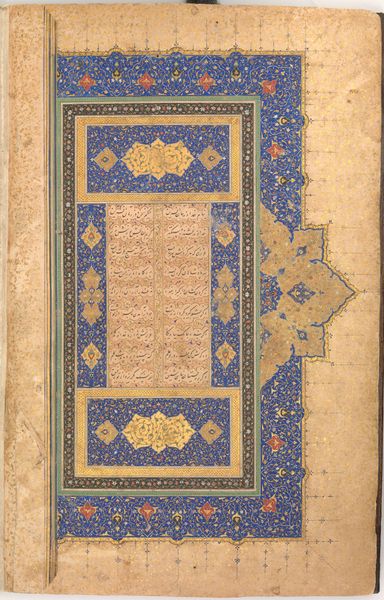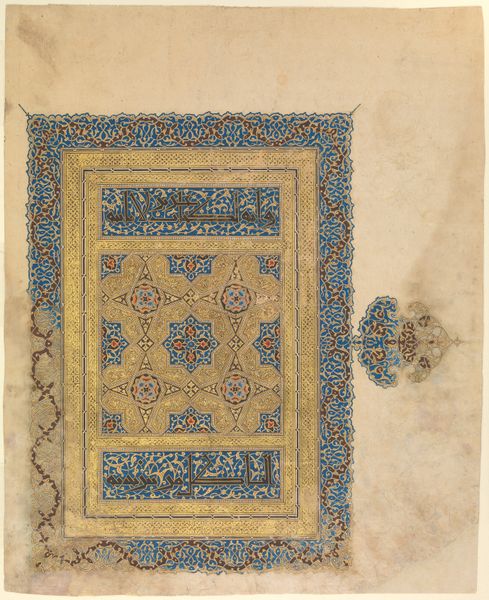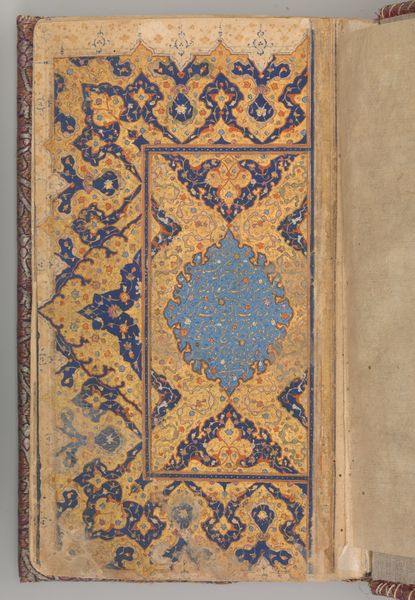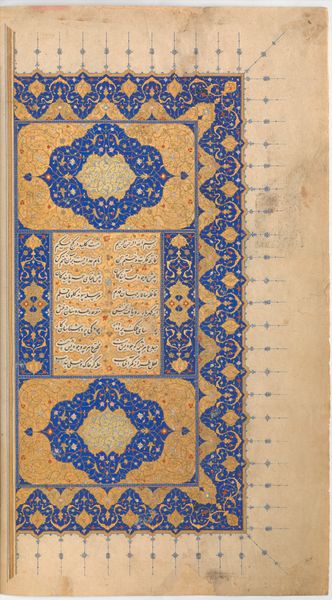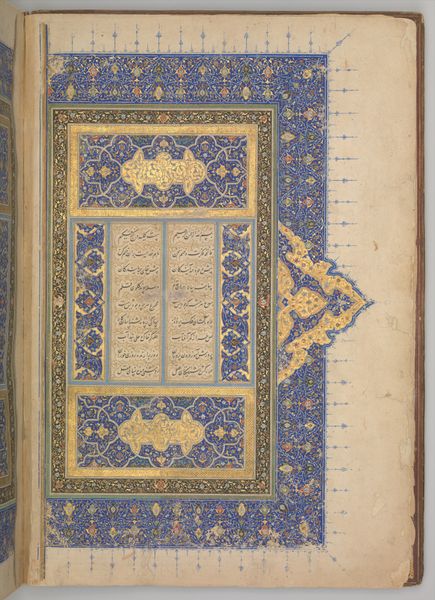
Double Page from the Qur'an Safavid dynasty (1501–1722), 16th century
0:00
0:00
paper
#
asian-art
#
paper
#
geometric pattern
#
geometric
#
islamic-art
#
calligraphy
Dimensions: Each page 31.8 × 21.0 cm (12 1/2 × 8 1/4 in.)
Copyright: Public Domain
Curator: This is a double page from the Qur'an, dating back to the Safavid dynasty, in the 16th century. Editor: It strikes me as incredibly ornate and opulent. The gold leaf against that rich blue creates a jewel-like effect, though I confess the symmetry also feels quite rigid. Curator: Indeed. Consider the labor invested here: the paper making itself, the grinding of pigments, the precision required for such intricate designs, not to mention the calligrapher's skill. We must acknowledge that creating such an object served as a profound devotional practice in its own right. Editor: Absolutely. The Qur'an is more than just a text; it's a cultural artifact interwoven with identity and power. Think about the commissioning patron, the possible social and political implications of owning such a lavish manuscript, or even just accessing literacy during this period. Curator: Precisely! The use of high-quality materials speaks volumes about trade networks and the availability of resources during the Safavid period. Gold, lapis lazuli for the blue, and the paper itself all represent considerable expense. These luxurious features acted as an active extension of faith for both artist and audience. Editor: Beyond that, the non-figurative geometric patterns become inherently significant. Islam's theological foundations manifest visually through art; consider that repeated symmetry embodies themes of infinity, divinity, and the vastness of the universe. These principles are deeply interwoven in a visual language promoting introspection. Curator: Very insightful. The level of detail demonstrates the artisan’s mastery of their craft. By studying production processes we might illuminate how cultural exchange and economic activity fostered artistry in 16th century Persia, or explore potential gendered labor dynamics within workshop settings… Editor: And let's not forget its contemporary relevance. Viewing this now prompts dialogue between historical faith practices, artistic expression, and the sometimes conflicting politics of representation. Examining historical cultural documents is essential to dismantling prejudices, to comprehend our shared histories and complexities. Curator: Agreed. There's a rich story embedded in this manuscript, linking craftsmanship, devotion, and societal structure in unexpected and vital ways. Editor: Yes, appreciating both its material reality and social history makes for a far deeper engagement.
Comments
No comments
Be the first to comment and join the conversation on the ultimate creative platform.
